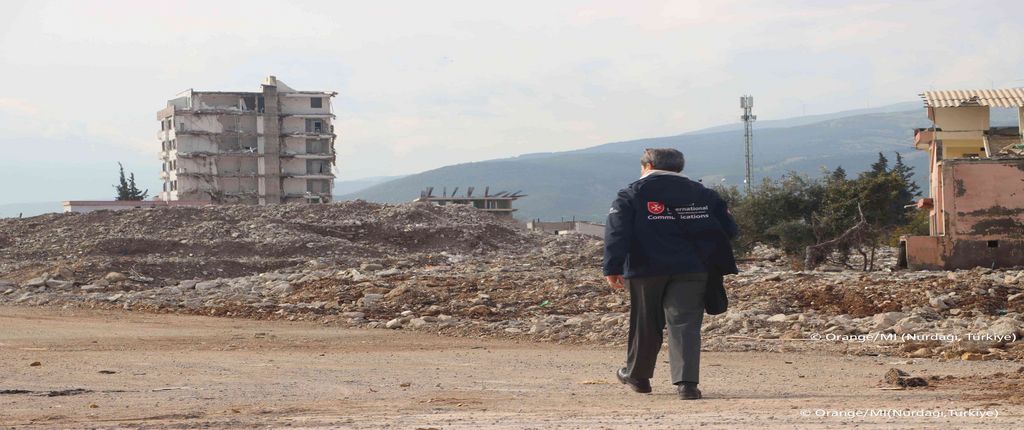
Resonating tremors: Syria's ongoing struggle post-earthquake
Our press officer Katharina Kiecol travelled with team members from our Middle East department to the Turkish-Syrian border region, which was shaken by the severe earthquake in 2023, and spoke to those affected in Syria. She wants to know: What is the situation there? How are people doing today? And is our assistance reaching them?
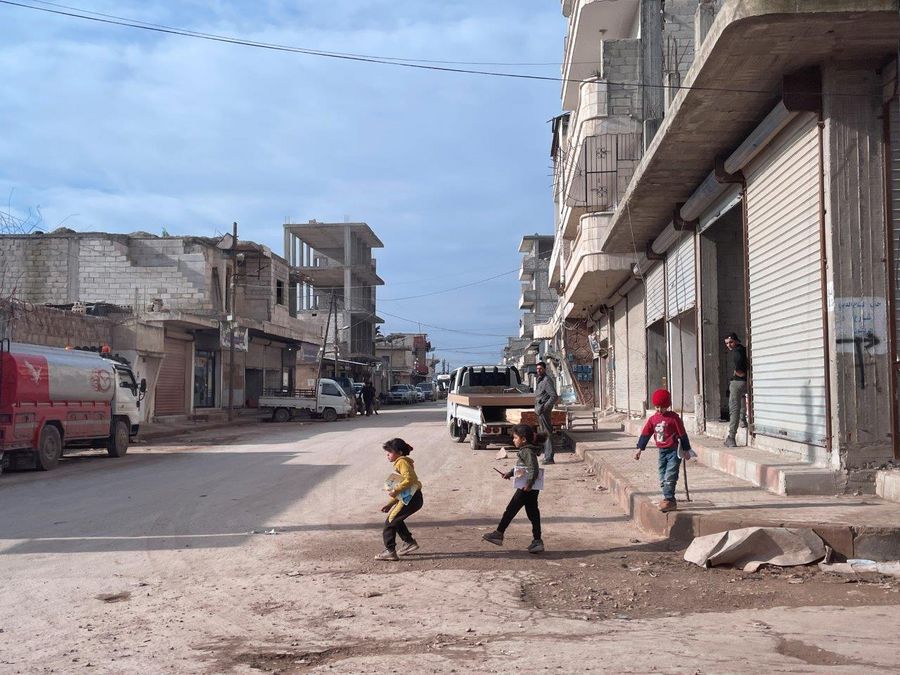
It feels strange when we are standing on the Turkish-Syrian border and the earth suddenly shakes beneath our feet. Ever so slightly, but still noticeable - as if nature wanted to remind us why we are here. At the time of our journey, it had been almost a year since the severe earthquakes struck this region. Earthquakes that claimed the lives of almost 60,000 people and caused millions more to lose their homes and livelihoods.
This is the first time I have travelled to Syria. I have had many conversations with people who have fled from Syria to neighbouring countries or to Germany. But what is it like for the people who stayed on the ground?
About 30 kilometres across the border lies the city of Afrin, one of the places most affected by the earthquakes. The prolonged war had already brought many changes: before 2011, around 35,000 people lived here, but now over 450,000 people have been displaced. The streets are overcrowded and it almost feels as if the earthquakes just happened yesterday. There are still ruins to the right and left of the streets. "There is no one from the ruling groups who feels responsible for reconstruction," explains Dr Mahmoud Mustafa, head of the Syrian aid organisation IDA (Independent Doctors Association), our local partner.
A hospital made of tents
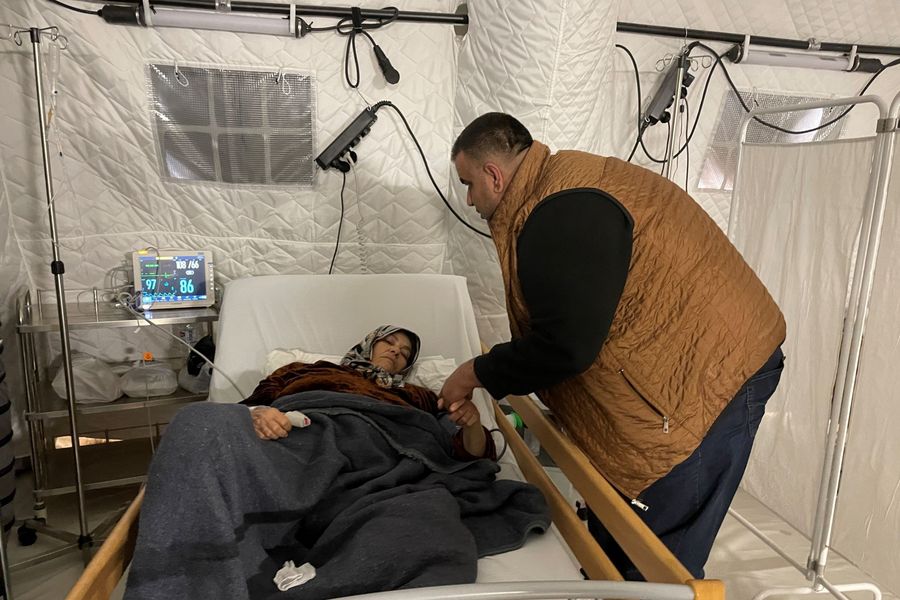
We are accompanied on our journey by IDA staff, because without them our entry would not be possible. Our first destination is the field hospital in Afrin, which Malteser International helped to build and which is run by IDA. "When the earthquakes struck, there was only one hospital for the whole city. Many smaller health facilities were destroyed. An alternative had to be created quickly," says Dr Mustafa.
Huge tents stand close together in the field hospital and it is a hive of activity. Patients are sitting and waiting in every room. Even though there are only tent walls around us, the field hospital has almost everything needed for the examinations: including two operating theatres, a CT machine and X-ray equipment.
I meet Dr Hasan Wazaz in a separate treatment room. I ask him how he experienced the earthquakes back then and how he sees the situation today, and he begins to tell me. "At first, I had no idea about the scale of the earthquakes. I went to the hospital and it was completely overcrowded. Ambulances were constantly pulling up and bringing several injured people at a time. Today, most of those affected in Afrin are still living in tents because their homes have been destroyed. And that's a big challenge in winter, because it's cold and people don't have enough money to heat their homes. This is particularly dangerous for children's health. In addition, the people in Afrin are more or less severely traumatised. I have a 21-year-old patient who lost her husband and brother in the earthquake. She lay under the rubble for days and broke her back and one of her legs. How will she ever forget the earthquakes?"
40,000 people are still living in emergency shelters
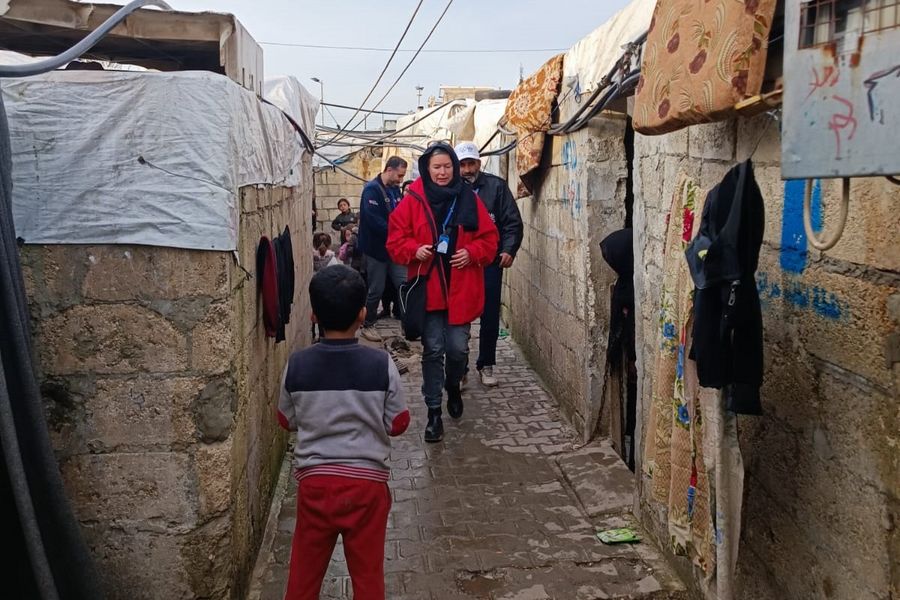
A few kilometres away, near the Bab al Salam border station, is the Wassim Maaz Hospital, which we helped to build in 2015 and have been supporting ever since. The journey there is tedious - the roads are barely paved and we have to stop at checkpoints time and again. In this area, much like Afrin, the landscape is densely dotted with tents. More than 40,000 people are still living in these shelters in north-west Syria because of the earthquake, and four million more because of the war. Numbers that only become roughly comprehensible when I realise that there is a person and a story behind each one of them.
Like 40-year-old Muhammed Abdu. I meet him at the hospital, where he is being treated for high blood pressure, free of charge. With some medication in his pocket, he makes his way home and gives us a lift. He lives with four of his six children and his wife in one of the camps next to the clinic. He used to live near Aleppo, but fled here immediately after the war to bring himself and his family to safety. That was almost 13 years ago. Today, around 26,000 people live in three camps around the clinic. But in the clinic's catchment area, the number shoots up to one million.
Muhammed Abdu shows us how the earthquakes damaged his small home. Private donors, he says, helped him to repair his house, as there were deep cracks in all of the walls. "We are still traumatised. Even though we're all alive, we are constantly afraid that we're not safe," says Muhammed Abdu.
The illusion of safety
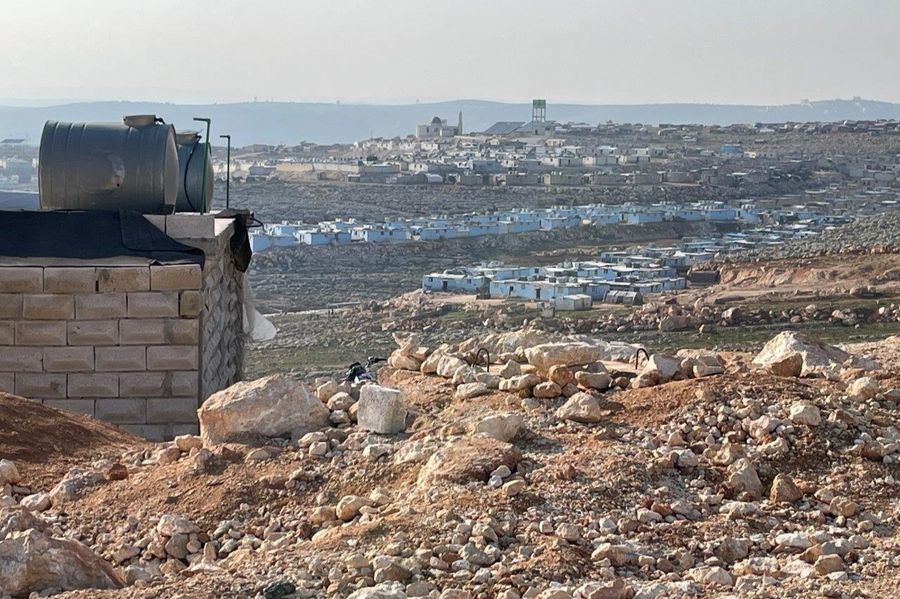
Deep-seated fear and trauma are recurring themes during my journey. Even when we travelled to the Idlib region two days later. This region is currently controlled by the radical Islamic organisation Hayat-Tahrir-al-Sham. For reasons of cultural sensitivity, but also for our own safety, the women in our travel group therefore wear an abaya, an ankle-length dress that is worn over their clothes. It feels unfamiliar and I'm not as flexible as I normally am.
After crossing the border, we head south to Armanaz. I have never seen so many refugee shelters in such a small space. And this despite the fact that the ground is so littered with stones that I can hardly imagine how tents or containers can even be set up here. I meet Dr Ibrahim Al-Khatib at the Armanaz Surgical Hospital run by our partner organisation HIHFAD (Hand in Hand for Aid and Development). Shortly after the earthquakes he told us how terrible the situation in the hospital was. Today I want to know what the situation is now. "Looking back, the earthquakes were the worst thing I've ever experienced," says Dr Al-Khatib. "The situation here was already bad before the earthquakes. Hundreds of thousands of people had fled to this area before the war because they thought they could live here in safety. But then the earthquakes struck and many lost their homes again, lost family members and friends. It affected me deeply and I was really emotionally worn out," says Dr Al-Khatib.
People in Syria still need our support!
There is very little reporting on the situation in Syria, as other crises have taken centre stage. But the fear of the people here is palpable. Last year's earthquake has left people feeling even more vulnerable than they already were due to the ongoing violence, as the seemingly safe regions of Idlib and Afrin have suddenly become a death trap for more than 7,000 people.
I am travelling home with mixed feelings. On the one hand, we have seen that our support is reaching people, especially in the medical sector with well-equipped clinics. But on the other hand, it was abundantly clear how great the need is, how much will be needed for a long time to come and how important it is that we do not forget the people in Syria. I definitely hold them close to my heart and am very grateful that they spoke to me so openly and shared their stories with me.
(Katharina Kiecol, January 2024)








